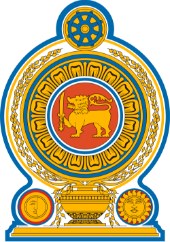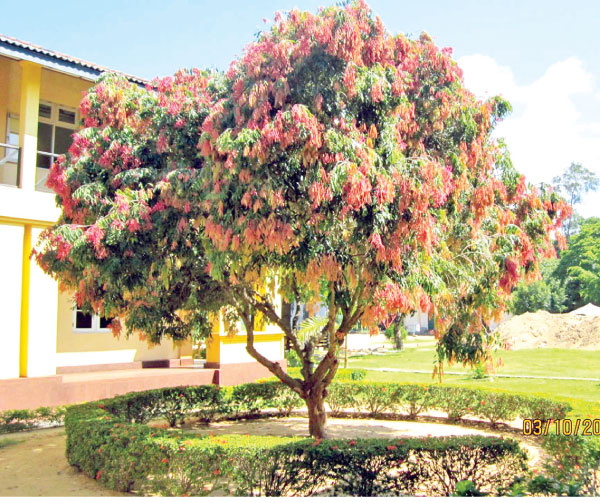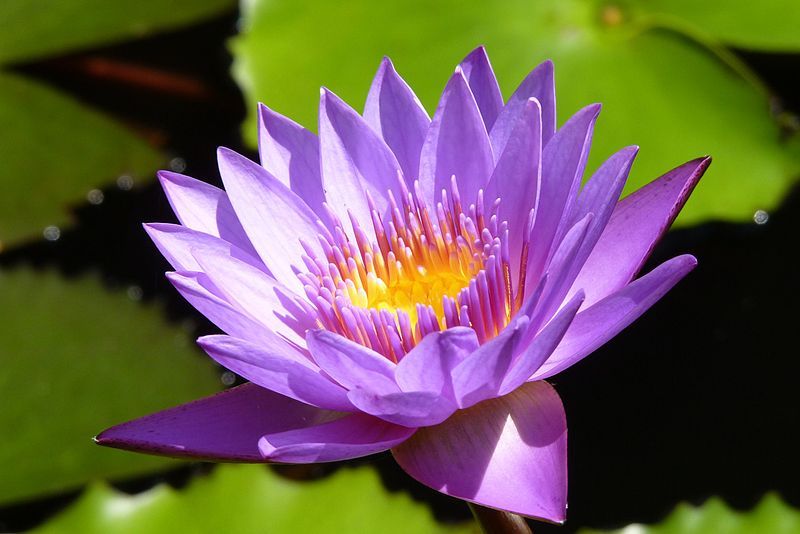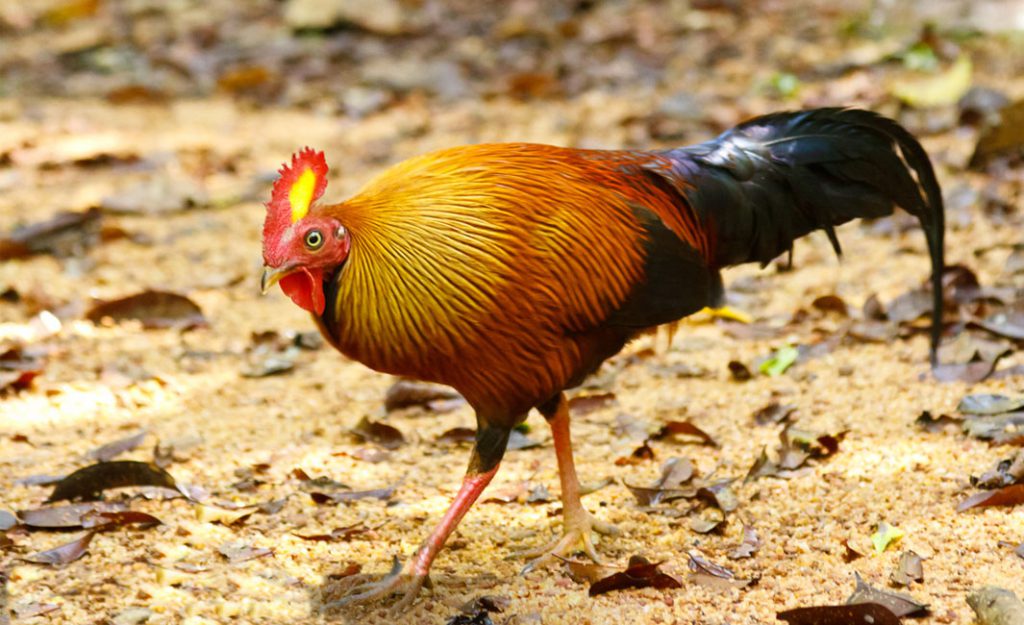Sri Lanka

Conventional short Name form : Sri Lanka
Former Name : Ceylon
Size: Area – 65,610 sq km Length – 445 km Breadth – 225 km
Capital : Sri Jayewardenepura
Commercial Capital : Colombo
Government : Sri Lanka, is a free, independent and sovereign nation with a population of 21.6 million (2018 est). Legislative power is exercised by a Parliament, elected by universal franchise on proportional representation basis. A President, who is also elected by the people, exercises executive power including defence. Sri Lanka enjoys a multi party system, and the people vote to elect a new government every six years.
Population : 21.6 million
Population Density : 296 people per sq km
Life Expectancy at Birth : 76.4 female, 71.7 male (2001 est)
Literacy Rate : 92.7% (2003 est)
Languages : Sinhala & Tamil is widely spoken throughout Sri Lanka.
Ethnic Mix : Sihalese, 74.9%; Tamil, 15.4%; Muslim 9.2%; Burgher (descendants of Dutch and Portuguese colonist) and others 0.5% (2012 est)
Religion : Buddhism 70.19%; Hinduism 12.61%; Christianity 7.45%; Islam 9.71%
Climate : Low lands – tropical, average 27°C Central Hills – cooler, with temperatures dropping to 14°C. The south-west monsoon brings rain to the western, southern and central regions from May to July., while the north-eastern monsoon occurs in the north and east in December and January. Sri Lanka boasts of a good climate for holiday-makers throughout the year.
Annual per capital GDP : US $3600 (Approx)
Industries : Processing of rubber, tea, coconuts, and other agricultural commodities; clothing, cement, petroleum refining, textiles, tobacco.
Agriculture – Products : Rice, sugarcane, grains, pulses, oilseed, roots, spices, tea, rubber, coconuts; milk, eggs, hides, meat.
Currency : Sri Lanka follows decimal currency systilable in the denominations of Rs. 2,10,20,50,100,200, 500,1000,2000, and 5000 in Rupees (Rs.) and cents (Cts.) with 100 cents equal to a rupee.
Visa : Visit Sri Lanka Embassy Web site or Sri Lanka Immigration Web site: www.iimigration.gov.lk
Working Week : Sri Lanka works a five-day week, from Monday to Friday.
Business Hours : Government offices 8.35 a.m. – 4.15 p.m, Monday to Friday
Banks : 9.00 a.m. to 1.00 p.m. or 3.00 p.m. Monday to Saturday
Post Office : 8.30 a.m.- 5.00 p.m., Monday to Friday 8.30 a.m. – 1.00 p.m. on Saturday. The Central Mail Exchange, at D.R.Wijewardene Mawatha, Colombo 10, (Telephone :326203) is open 24-hours.
Location : An island off the south-eastern cost shores of India, 880 km north of the equator, in the Indian Ocean. It lies between 5° 55′ and 9° 55′ north of the equator and between the eastern longitudes 79° 42′ and 81° 52′.
Feature : Encompassed beautiful tropical beaches, verdant vegetation, ancient monuments and a thousand delights to please all tastes. The relief features of the island consist of a mountainous mass somewhat south of the centre, with height exceeding 2,500 metres, surrounded by broad plains. Palm fringed beaches surround the island and the sea temperature rarely falls below 27°C.
Climate of Sri Lanka In the lowlands the climate is typically tropical with an average temperature of 27°C in Colombo. In the higher elevations it can be quite cool with temperatures going down to 16°C at an altitude of nearly 2,000 metres. Bright, sunny warm days are the rule and are common even during the height of the monsoon – climatically Sri Lanka has no off season. The south west monsoon brings rain mainly from May to July to the western, southern and central regions of the island, while the north-east monsoon rains occur in the northern and eastern regions in December and January.


The National Flag of Sri Lanka represents the country and her heritage as rallying device that integrates the minorities with the majority race.
Sri Lanka National Flag is an improvisation of the civil standard of the last king of Sri Lanka, Sri Wickrama Rajasingha.
The civil standard had a passant royal lion with a sword in it’s right fore paw at the center, and a bo-leaf on each of the four corners on a plain border.
When Sri Lanka gained her independence from Great Britain on February 04, 1948, it was the lion flag of the last king of Sri Lanka was hoisted once again.
The first Prime Minister of independent Sri Lanka, D.S.Senanayake, appointed a committee to advice the government on the design of a new national flag. The design approved by the committee in February 1950 retained the symbol of the lion with the sword and the bo-leaves from the civil standard of the last king of Sri Lanka, with the inclusion of two vertical stripes green and orange in color.
The national flag was hoisted for the first time on March 3, 1950.

The Ironwood (Na Tree), botanically known as ”Mesua Nagassarium” was declared the National Tree on 26th February 1986.
This rain forest tree grows to about 30 m high and indigenous to the lower wet Zone of Sri Lanka. Remarkable Features of NA is beautiful bright Red Leaves and finally matured in to a deep green. Timber has a very hardness and durability and used to make bridges in the early times. Now it is not allowed to use for timber due to its religious value. The flower of NA is also used in herbal medicine and preparation of perfumes, cosmetics and soaps.
It is believed that the first visit of Buddha was to grove of a NA Tree at Miyanganaya and also the next Buddha (Mithriya) will attain enlightenment under a NA tree.

The “Nil Mahanel” flower, botanically known as “Nympheae Stellata” was declared the National Flower of Sri Lanka on 26th February 1986.
Sri Lanka National Bird

Sri Lanka Jungle Fowl – Very colorful ground bird, endemic to Sri Lanka is the national bird of Sri Lanka. Distributed commonly in Sri Lanka’s jungle and dense scrub through out. Roosts high in trees at nights. Flies up to tree branches when threatened. Nests in hidden, scraped place on the ground or on a pile of vegetation just off the ground. Sinharaja is a very good site to watch Sri Lanka Jungle Fowl.
